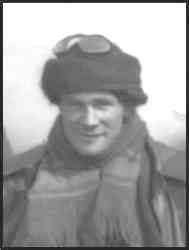
1890-1917 |
 |
Selections from the June 26, 2004, Presentation by Christine Carlstrom-Trick Tamaru at the 76th Annual North Park Pioneer Association Reunion |
|
Good morning beloved family, friends, neighbors and all current and former North Parkers…..it is truly a
pleasure and honor to be home again for an Old Timer's Reunion, especially one that is recognizing the Carlstrom family. My role this morning is to speak about my Swedish family members who immigrated to North Park-------- my Great Aunt Fanny, Great Uncle Victor, and my grandfather, Carl Carlstrom. Pasted on the bleachers you will find a family tree that depicts the linkages between eight generations of Carlstroms…both ancestors and descendants. The parents of the Carlstrom's that came to North Park were Axel and Hedda Kristina (Gustafsdotter) Carlstrom, my great-Grandparents. All together they had nine children. Four died in infancy and a son Frans died at the age of 18 from tuberculosis. The rest, of course, came to America for a better life and opportunities and to join their family members, among them the Norells. Victor Carlstrom was born in Sweden April 13, 1890 and arrived at Ellis Island in 1904 at the age of 14. He made his way to North Park, Colorado where he would work for his Uncles Andrew and William Norell at their ranches. By 1911, North Park had a railroad that ran from Walden to Laramie, Wyoming and Victor Carlstrom rode the first train to Laramie and then to Los Angeles to learn to fly. Victor learned to fly after only 10 days of instruction and postcards were received in North Park showing Victor Carlstrom giving rides at county fairs, dropping the first ball from an airplane at a baseball game and other daring feats. At the outbreak of WW I, Victor was one of the foremost aviators of his time, receiving a First Lieutenant commission signed by President Woodrow Wilson. He made many first flights and set many altitude and distance records. One of Victor's most treasured gifts was a sheepskin suit worn by Admiral Peary upon discovering the North Pole. Unfortunately on May 9, 1917, Victor Carlstrom and a student pilot would meet an untimely death when the wing of the aircraft he was piloting would fall off resulting in the downing of his plane. Victor was engaged to be married at the time of his accident and his death brought a close to this branch of the Carlstrom tree. |
In addition to the selection above, you will find the story of Christine's mother Marion, who was the second woman to get a pilot's license in Peru and was a member of the WASP in WW II.. |
 |
|
AT NEWPORT NEWS He learned to fly at the Curtiss School in Newport News, VA in 1915. His instructors were Victor Carlstrom and Walter Lees. His first solo was July 4, 1915. His aviation career started with Curtiss in Hammondsport. He was Project Engineer at Garden City on the NC Transatlantic Flying Boats. He is survived by his wife Mabel, two sons, a daughter and six grandchildren. |
|
1916 Editor's Note: The specifications for and a photo of the Curtiss Model R may be found on the AeroFiles site. Use your "Find" button and look for Curtiss R |
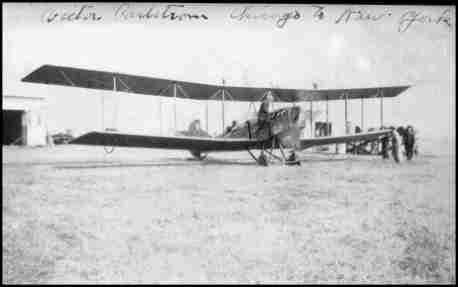 |
Photo from collection of Lester Bishop Courtesy of David Balanky |
|
Vic Carlstrom flew the big 200 h.p. Curtiss biplane called "The New York Times" to Newport News one day, the one he had flown in a race from Chicago to Governor's Island, New York in eight and one-half hours. He was going to take his brother Carl, who had come on from his ranch in Wyoming to learn to fly, for a hop in it. But something went wrong and he crashed in shallow water before our startled eyes. It was a sorry sight to see the big plane sink into the water with the name "New York Times" slowly disappearing under the waves |
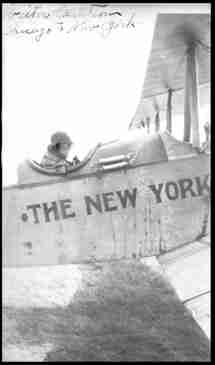 |
Photo from collection of Lester Bishop Courtesy of David Balanky |
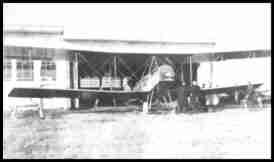 |
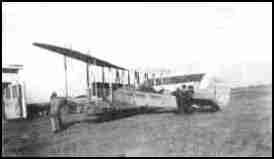 |
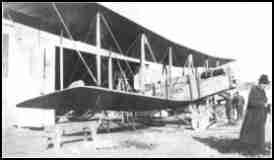 |
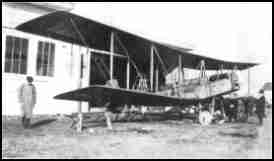 |
Lester Bishop Courtesy of David Balanky |
|
Chattanooga Daily Times, Chattanooga, Tennessee: August 26, 1916, Transcribed by Bob Davis - 2-10-05 The flights were made from the local station to Fisherman's Island and back, the distance each was being a fraction over twenty-five miles. Because of a heavy fog it was necessary for the aviator to steer by compass. "Unless Carlstrom's record is broken the Curtiss aviation cup will be awarded the Atlantic coast aeronautical station. The cup was won last year with a flight of less than 500 miles. |
|
|
|
|
|
When a plane "folded up". it was likely some of the bracing wires broke and the wings folded up, broke off, or trailed behind the airplane. Carlstrom's crash would be like falling off a 1000-foot high bridge. Instructor Walter Lees was just coming out of the hanger when Carlstrom's Jenny dived nose-first into the field. "I rushed to the plane," Lees told a Daily Press reporter, "to pull them out. There was no fire, but the nose of the plane was buried three feet into the ground. Both of them were cut pretty bad, and blood was everywhere. Neither of them moved, but I coudn't tell whether they were dead or just knocked out. When we got them out, we knew they were dead. It was a shock. Vic had been one of my closest friends. We had been laughing and joking just before he went up." 

|